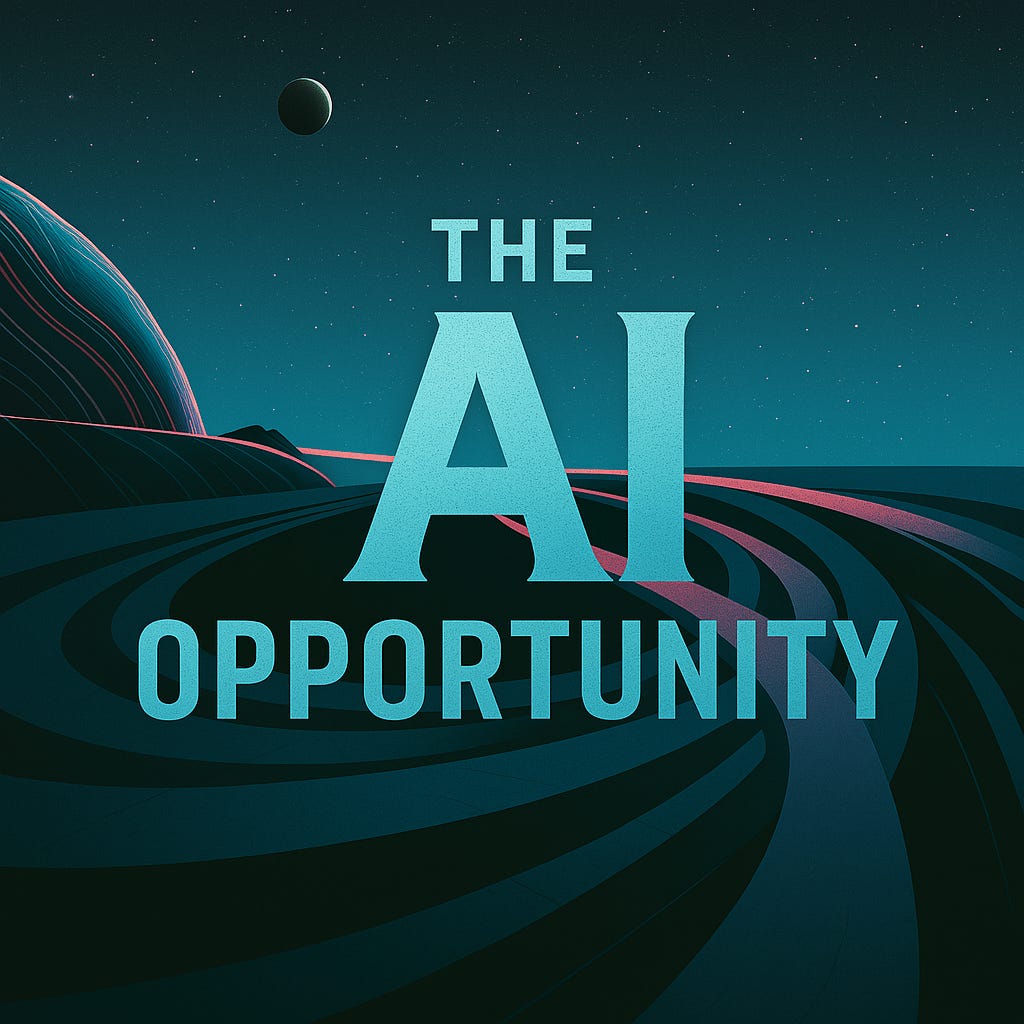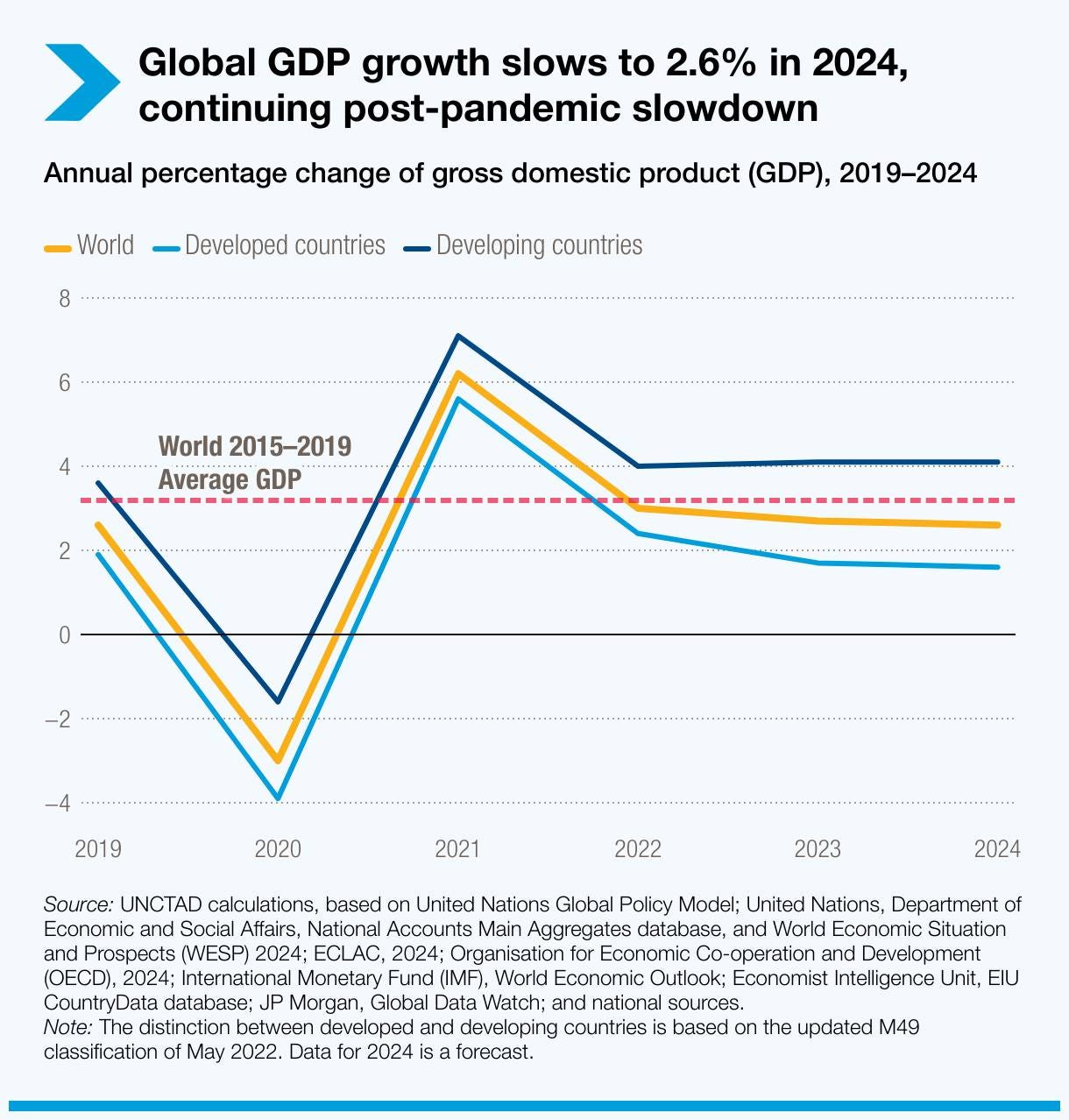The AI-Productivity Gap: Biggest factor limiting global GDP Growth
AI Is Accelerating. Humans Aren’t
Guest Post by Guillermo Flor
Hi, I’m Guillermo Flor — a venture capital investor and entrepreneur. I write two newsletters:
Product Market Fit, focused on business, startups, and growth
The AI Opportunity, which explores the biggest business opportunities in AI before they happen.
I invest in AI companies and spend most of my time speaking with founders, operators, and other investors who are building the future.
Lately, I’ve been noticing a strange paradox in the market — and it inspired this piece.
AI Is Accelerating. Humans Aren’t
Why people—not technology—are now the biggest bottleneck to global growth.
Over the past few years, we’ve witnessed one of the most explosive technology shifts in history. AI tools can now write essays, generate videos, discover new drugs, optimize supply chains, and even debug code.
Companies are being built in weeks. Industries are being reshaped in months. The scale and speed of innovation are breathtaking.
And yet—when you zoom out and look at global GDP growth, something doesn’t add up.
Despite this technological leap, global economic growth remains stubbornly linear. Productivity has ticked up in some sectors, but not at the scale or speed you’d expect from a revolution of this magnitude.
Why?
Because the bottleneck is no longer technology.
It’s people.
We’ve Entered the Age of the Human Bottleneck
AI is moving exponentially. But most of the world isn’t.
Every week, new tools come out that could automate work, speed up research, or unlock entire new businesses. But to make them work, you still need someone who knows how to use them.
Someone who understands the context, can adapt quickly, and can integrate these tools into real-world systems.
That person is increasingly rare.
There’s now a widening gap between:
Those who can use AI effectively,
And everyone else.
This gap is growing daily. It’s not just about knowing how to prompt ChatGPT. It’s about being adaptable enough to learn a new paradigm every 3–6 months. Most people (and companies, and institutions) simply aren’t wired for that pace.
Talent Is the Scarce Resource
For decades, the world has optimized around capital as the limiting factor for innovation. If you had money, you could build things. But in the AI era, capital is abundant.
What's scarce is talent that can turn this capital into leverage through technology.
Try hiring a world-class AI engineer. Or even someone who can combine off-the-shelf tools into a scalable workflow. The best people are snapped up immediately. The rest are learning — slowly.
Startups with a breakthrough product can’t scale fast enough because they can’t find enough AI-native operators.
Enterprises are sitting on mountains of inefficiency they know AI could fix — but they don’t have the people who can implement the fix.
Governments could radically improve education, healthcare, and infrastructure — but they don’t even know where to start.
The AI-Productivity Gap
Here’s the real problem:
We’re creating technology faster than we’re creating people who know how to use it.
Let’s call this the AI-Productivity Gap — the growing distance between what AI enables and what the current workforce can deliver. This gap is already slowing down innovation, despite the raw potential being higher than ever.
The longer this gap persists, the more we’ll see:
Capital misallocated.
Projects delayed.
Innovation trapped in labs or demos instead of deployed in the real world.
The opportunity cost is massive.
The Future Will Belong to Those Who Learn Fast
This is not just a hiring problem. It’s a global capacity crisis.
The organizations and countries that figure out how to massively upskill their people, adapt their institutions, and reduce friction between invention and implementation — they’ll win.
Everyone else? They’ll fall behind. Not because they lack the tools, but because they can’t make use of them.
AI can write code, write emails, optimize logistics, and generate marketing plans — but it still needs humans to:
Know what to build.
Validate it.
Deploy it.
And most importantly: adapt to what comes next.
Hope this was valuable!
Talk soon
- Guillermo












